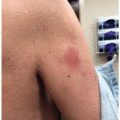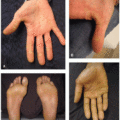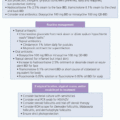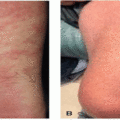cutaneous adverse event across immune checkpoint inhibitors and most common with CTLA-4 inhibitors.5,6 In addition to anticancer therapy-induced itch, other causes of pruritus include new onset or exacerbation of preexisting inflammatory dermatoses, paraneoplastic causes, systemic or metabolic mediators, infection-related, as well as ancillary medication effects such as those used to treat pain (Table 44.2).
TABLE 44.1 • Anticancer Therapy Classes Associated with Pruritus | |
|---|---|
|
TABLE 44.2 • Nontherapeutic Causes of Pruritus in Cancer Patients | ||||||||||
|---|---|---|---|---|---|---|---|---|---|---|
|
any cutaneous findings. If there are cutaneous findings, the morphology and distribution can provide further clues as to etiology (Table 44.3). Testing for dermatographism by firmly stroking the skin with the back of pen to look for a wheal-flare response (Figure 44.1) in all patients, even those with no active urticarial plaques or a known history of hypersensitivity, is recommended. Inspection for signs of systemic disease such as volume overload, hepatobiliary insufficiency or hemolysis, uremia, and thyroid dysfunction should inform metabolic testing. Lymph node and hepatosplenic exams are recommended, as pruritus has been associated with increased burden of disease and poor outcomes in hematopoietic neoplasms, such as cutaneous T-cell lymphoma and Hodgkin lymphoma.10 Patients with pruritus in noninflamed skin and those with secondary lesions may present with excoriations, sparing areas difficult to reach (Figure 44.2), prurigo nodularis, or evidence of chronic rubbing—lichen simplex chronicus (Figure 44.3) in the absence of other primary lesions.
Stay updated, free articles. Join our Telegram channel

Full access? Get Clinical Tree







